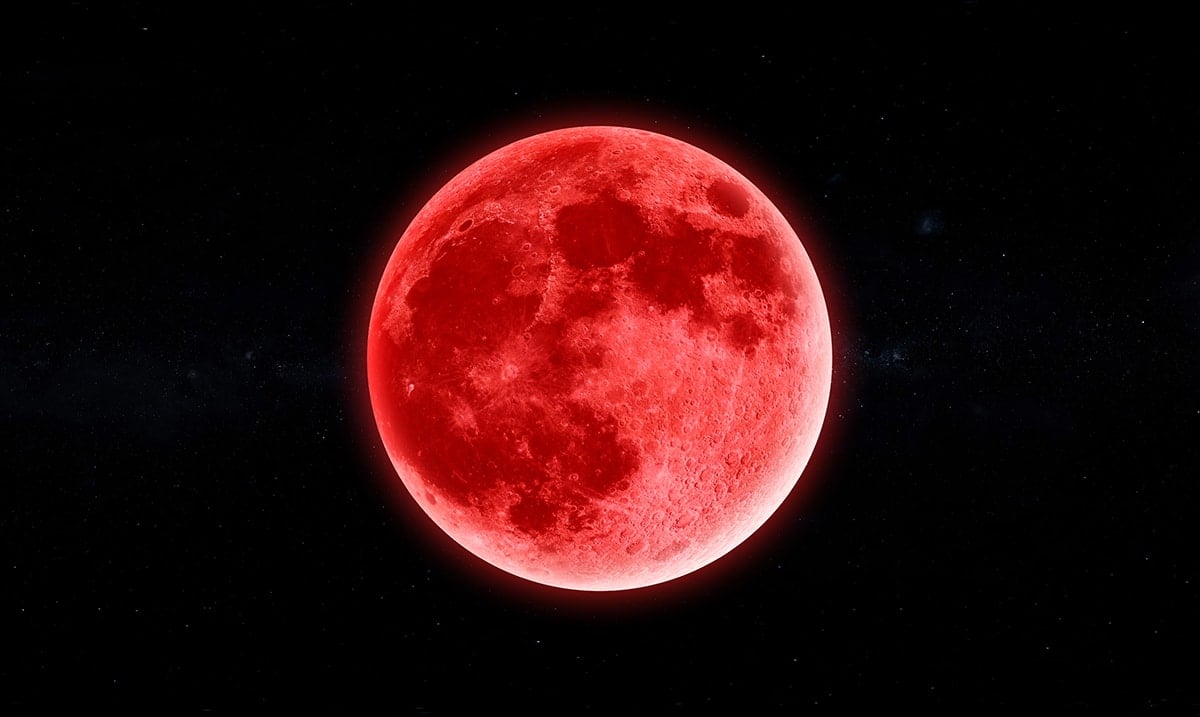On November 19, 2021, we will experience an almost total lunar eclipse or a blood moon eclipse. It will be visible for North America, South America, Northern Europe, eastern Asia, Australia, and the Pacific.
During the event, November’s “Beaver Moon” will enter Earth’s shadow for the longest time this century. However, this will technically only be a partial lunar eclipse. However, did you know that this will also set up a total solar eclipse in early December?
What Is The Blood Moon?
Additionally, this full moon will be known as the Beaver Moon, and it also is happening under Taurus. The reason a total lunar eclipse is referred to as a blood moon is that when the moon enters Earth’s shadow, it causes the moon to turn a deep red color that resembles blood. Since this particular eclipse will only technically be partial and the entire moon will not be encompassed in Earth’s shadow, the color may not appear as deep as it would if it were a total. However, it’s going to get pretty close. Basically, only a crescent of the moon will not be entirely eclipsed.
Why Will The Blood Moon Last So Long?
Making this event even more unique, is the fact that it is the longest eclipse of the century. Most eclipses only last a few hours at most, but this one will be going far past three hours long.
One of the major reasons for this eclipse lasting so long is due to how small the moon will appear because it will be slightly further away than it usually is. Due to this, the moon will literally be deeper in the shadow of Earth than it normally would be.
What Will Happen During The Eclipse?
The event will start around 2 am on the East Coast and last until around 5:30 am. Around 4 am is when it will peak, according to NASA. That is when the color will be at its deepest, and when you can fully see the beauty of this moon.

The Moon moves right to left, passing through the penumbra and umbra, leaving in its wake an eclipse … [+] NASA’S SCIENTIFIC VISUALIZATION STUDIO
Here’s the global schedule according to eclipse expert Fred Espenak:
Penumbral lunar eclipse 06:02-07:18 UTC (76 minutes – full Moon drops in brightness … you can miss this part.)
Partial lunar eclipse 07:18-09:02 UTC (104 minutes – full Moon begins to turn reddish … the sight of the Moon slowly turning reddish is incredible!)
Greatest eclipse (near-totality) 09:02 UTC (greatest eclipse – full Moon is 97.4% red … if you only want a glimpse of the “Blood Moon” this is when to see it!)
Partial lunar eclipse 09:02-10:47 UTC (105 minutes – full Moon begins to turn grey … this is also a grand sight—it’s Earth’s shadow moving across the lunar surface!)
Penumbral lunar eclipse 10:47-12:03 UTC (76 minutes – full Moon remains muted in brightness … you can also miss this part.)

A world map showing where the eclipse is visible at the time of greatest eclipse. Earlier parts of … [+] NASA’S SCIENTIFIC VISUALIZATION STUDIO
How Can I See It?
This is a global event visibale to all people on the night-side of Earth, but when you get to see it depends on your time zone. Check a schedule for your location and consult an interactive map of the event.
When Is The Next Eclipse?
If you do, by chance, miss out on this eclipse, don’t despair, there will be another, a total lunar eclipse on May 16, 2022.
Since it’s a lunar eclipse, you can view it with the naked eye, no need for binoculars or a telescope unless you have them and want to use them. Mostly, you will need a nice warm jacket, or you can watch the live stream of the event that NASA will air.

